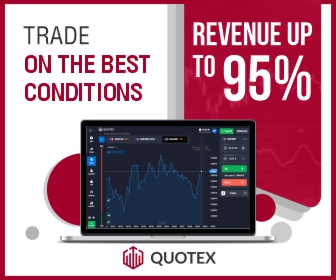VOLUME
For example, you decided to buy 100 shares of Tesla at $1000 each, and I decided to sell 100 shares of Tesla at $1000 each. There is a price and quantity match, which results in a trade. You and I together have created a volume of 100 shares. Many traders have this misconception that the volume will be 200 (100 buys + 100 sells), which is wrong, the actual volume will be 100 only.
Let's Understand How Volume adds up on a Typical Trading Day:
The market opened at 9:30 AM and there were 400 shares exchanged at the price of 62.20.
An hour later, 500 shares were traded at 62.75. At 10:30 AM if you were to check the total volume for the day, it would be 900 (400 + 500).

Likewise, 350 shares at 63.10 were traded at 11:30 AM, and up to 11:30 AM, the volume was 1,250 (400+500+350). So on, and so forth.
The Total volume information that you see here is called cumulative volume. Meaning, at 3:30 PM, a total of 3300 shares were traded at various price points ranging from 62.20 (low) to 64.50 (high) in the entire trading session.
The Volume Trend Table
Volume information on its own is quite useless. For example, Let's assume that the cumulative stock volume for Tesla is 90000 shares, which means on a single trading day 90000 Shares of Tesla were traded.
So, how useful is this information to us when we read it in isolation? well, it is of no use to us and hence would mean nothing. However, when we associate this volume information with the preceding price and volume trend, then this information becomes meaningful to us.
Let's understand the basic idea on how to use volume information:
To simplify the concept I am going to use daily candlestick as my timeframe while explaining the concept here, so if you are using a different time frame then you can apply it accordingly.
The first line in the table says, when the price increases along with an increase in volume, the expectations are bullish.
But before we understand this table in detail, think about this – we are talking about an ‘increase in the volume’. But, What does this mean? What is the reference point here? Who are we comparing it to, is its the previous day’s volume or the previous week’s volume?
As a practice, we should compare today’s volume over the average of the last 10 days' volume.
Generally, the rule of thumb for us will be very simple:
High Volume days are the ones when the present volume is greater than the last 10 days' average volume.
Low Volume days are the ones when the present volume is lower than the last 10 days' average volume.
When the volume is approximately the same as the last 10 days' average then we will say it's an average volume day.
In the given chart, you can see that the volumes are represented at the bottom of the chart. As you notice, all the volume bars that are bigger show an increased volume and we can say that some institutional activity or large participation has taken place.
Psychology Behind The Volume Trend Table
When Institutional investors buy or sell, they do not transact in small chunks. For example, If institutional investors would buy shares of Tesla, would you think they would buy 50 shares? No, they would probably buy 100,00 shares or even more. If they were to buy 100,00 shares from the open market, it would start reflecting in volumes. Besides, because they are buying a large chunk of shares, the share price also tends to go up. Usually, institutional money is referred to as “SMART-MONEY”. It is known that ‘smart money’ always makes wiser moves in the market than retail traders. Hence following smart money seems like a good idea.
If both the price and the volume are increasing this only means one thing – a big player is showing interest in the stock. Going by the assumption that smart money always makes smart choices, the expectation turns bullish, and hence one should look at buying opportunities in the stock.
so, whenever you decide to buy, ensure that the volumes are substantial. This means that you are buying along with smart money.
This is exactly what the 1st row in the volume trend table indicates – expectation turns bullish when both the price and volume increase.
But What do you think happens when the price increases but the volume decreases as indicated in the 2nd row?
Think about it on the following terms:
1- Why is the price increasing?
Because market participants are buying
2- Are there any institutional buyers associated with the price increase?
Not likely
3- How could you know that there is no meaningful purchase by institutional investors?
Simple, if they were buying, then the volumes would have increased and not decreased.
4- So what does a price increase, associated with decreasing volumes indicate?
It means the price is increasing because of small retail participation and not influential buying. Hence, it would help if you were cautious as this could be a possible bull trap.
Going forward, the 3rd row says, a decrease in price along with an increase in volume sets a bearish expectation. Let's understand it with psychology?
A price decrease indicates that market participants are selling the stock. An increase in volumes indicates the presence of smart money. Both events occurring together (decrease in price + increase in volumes) imply that smart money is selling stocks. Going by the assumption that smart money always makes smart choices, the expectation is bearish, and hence one should look at selling opportunities in the stock.
so, whenever you decide to sell, ensure that the volumes are good. This means that you too are selling, along with the smart money.
Moving forward, what do you think happens when both volume and price decrease as indicated in the 4th row?
Think about it in on following terms:
1- Why is the price decreasing?
Because market participants are selling.
2- Are there any institutional sellers associated with the price decrease?
Not likely
3- How would you know that there are no meaningful sell orders by institutional investors?
Simple, if they were selling, then the volume would increase and not decrease.
4- So what does a price decrease, associated with decreasing volumes indicate?
It means the price decreases because of small retail participation, and not influential selling. Hence it would help if you were cautious as this could be a possible bear trap.
Checklist
Let,s revisit the checklist and evaluate from the perspective of the volume. Let's understand this with one example.
The occurrence of a Bearish Engulfing Pattern – this suggests a short trade for reasons discussed previously
A resistance zone around the high of bearish engulfing candlestick pattern – we all know that resistance indicates supply. Therefore the occurrence of a bearish engulfing pattern near the resistance area suggests there is indeed a strong supply for the stock, and hence the trader can look at selling the stock.
Now Engulfing candlestick pattern on the resistance zone with high volumes. What can you expect from this?
The conclusion is quite clear – high volumes and a price decrease confirm the presence of large influential market participants who are positioning themselves to sell the stock.
All three independent variables, i.e. candlesticks, S&R, and volumes, suggest taking the same action, i.e. to go short because this is a triple confirmation!
I want to drive across the fact that volumes are compelling as it helps the trader confirm a trade. For this reason, it is an important factor and therefore, must be included in the checklist.
Now, How To Use Volume To Trade?
The stock should form a Good Candlestick pattern on a good SNR zone.
For a long trade, the low of the Candlestick pattern should be around the support.
For a short trade, the high of the Candlestick pattern should be around the resistance.
Volumes should confirm the trade.
Presence of above average volumes on both buy and sell day
NOTE - Low volumes are a big danger and hence don't trade where the volumes are low when using this strategy.
Key Takeaways
Volumes can be used to confirm a trend.
High volumes indicate the presence of Smart Money.
When you initiate a trade always make sure the volume supports your trading setup.
Avoid trading on low-volume days.
How to Practice This Strategy

There is no more efficient way of practicing that than in a Demo Trading Account with a real trading environment.

















0 Comments